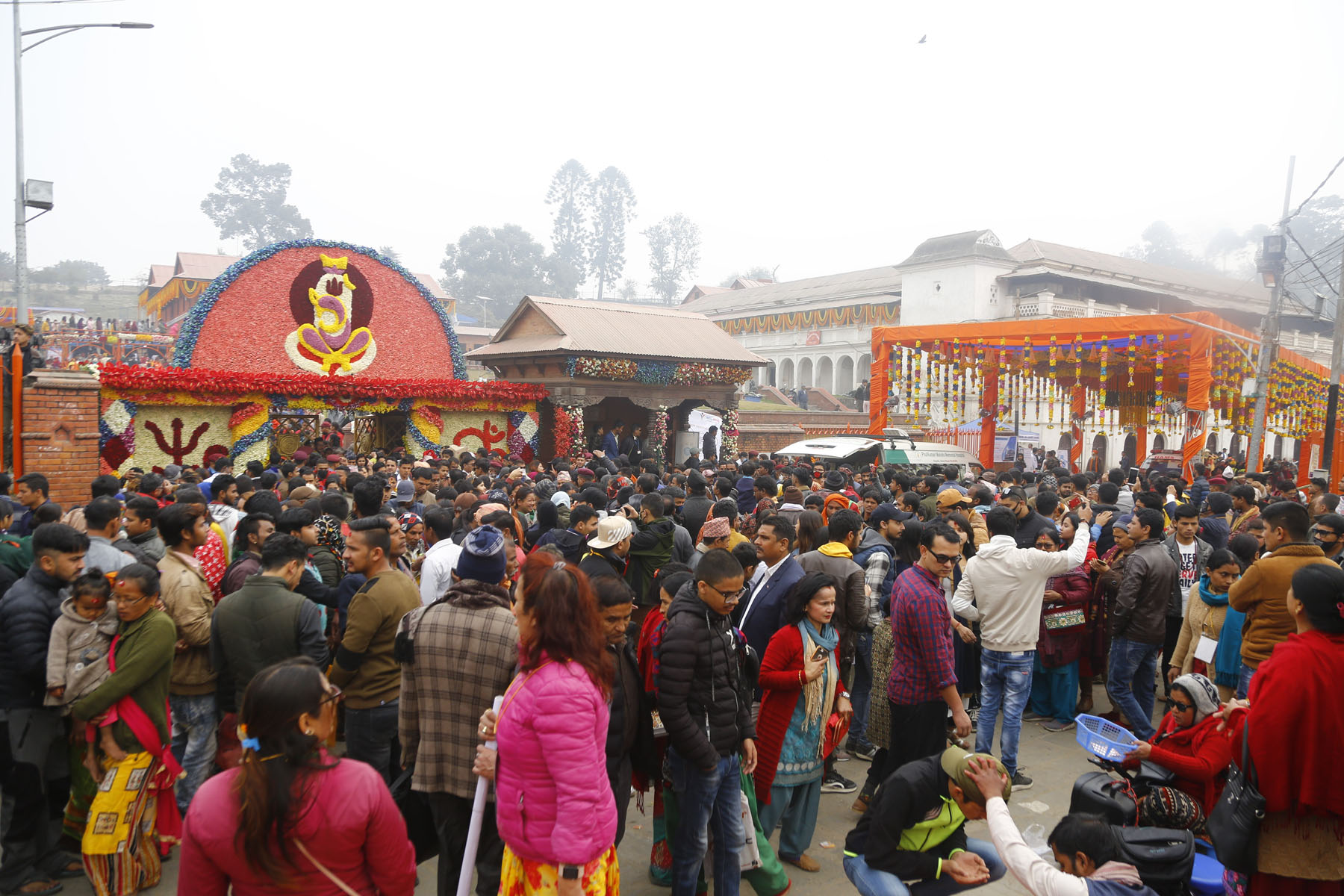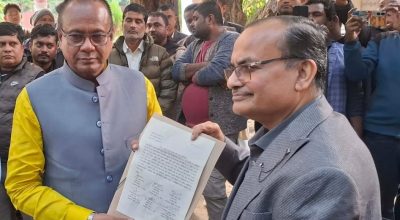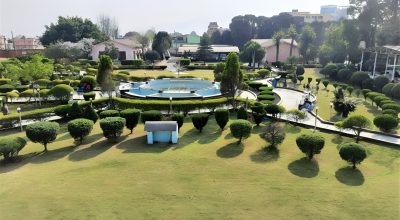
Kathmandu, Feb 25: Religious tourism has remained one of the best tourism activities across the world. Nepal has remained one of the best place for religious cultural tourism. Nepal is a unique place for Hindu, Boudhha and other faith.
Tourism is the act and process of spending time away from home seeking pleasure, recreation and relaxation. Traveling has existed since the emergence of human civilization making it an important feature of humans.
In ancient times, Nepal has been regarded as a major destination for tourists. The birthplace of Lord Buddha and the place of Pashupatinath and Muktinath in Nepal have attracted followers of both Hinduism and Buddhism. People regard the religious and spiritual site of Pashupatinath Temple and Muktinath Temple as a holy shrine devoted to the god Shiva, one of the main Hindu deities. Nepal has since ancient times attracted tourists making it a perfect destination for tourism.
Pashupatinath Temple has been listed in world heritage site as well. Visiting a religious heritage site is often considered an anaesthetic experience, one that may often engage visitors at emotional, physical, intellectual or spiritual levels. The principal aim of religious tourism is prayer and worship.
Religious tourism is different from spiritual tourism, however. Spiritual tourism particularly aims to explore the elements of life beyond oneself relating to the body, mind and soul.
Spirituality, which may or may not link with religion, has a direct link with the emphasis and culture of the self, wholeness, and interconnection.
Traditional religious tourism helps in the growth of modern tourism, according to experts.
According to the United Nations World Tourism Organisation estimate, over 300 million tourists visit the world’s major religious sites every year.
Historically, Nepal opened the door to foreign tourism in the mid-20th century. The flow of foreign tourists increased after Nepal got the UNESCO World Heritage Recognition with the UNESCO World Heritage Site listing of several religious sites including Pashupatinath, Boudhanath, and Swayambhunath in 1979.
Some of the religious tourist destinations include:
Pashupatinath Temple
Pashupatinath Temple lies on the banks of the sacred Bagmati river in the heart of Kathmandu, the federal capital of Nepal. The holy Pashupatinath Temple holds religious significance for Hindu people dedicated to Lord Shiva. Lord Shiva is one of the main Hindu deities. The temple attracts both Hindu and non-Hindu people from all over the globe in the belief that their wishes come fulfilled by worshipping at the temple, according to their religious beliefs.
It also attracts millions of tourists every year. It is listed on the UNESCO World Heritage Site in 1979. The temple was built in a mix of pagoda and shikhara styles is surrounded by small shrines and structures. There are four doors on the four sides of the temple. The four doors are painted silver with a gold-coated roof, adding to its beauty.
Maha Shivaratri festival is of the most attractions of the temple. The festival is celebrated annually generally in the Nepali month of Falgun. Devoted to the honour of Lord Shiva, the festival attracts millions of Hindu and non-Hindu people from Nepal, neighbouring India, and other countries.
On the day, people fast after taking a bath and perform ritual puja in the honour of Lord Shiva. They stay awake through the night.
People visiting the temple will have a glimpse of the vibrant atmosphere of Hindu rituals, prayers and ceremonies, making it a perfect place for cultural significance and spiritual aspects.
Swayambhunath Temple
Situated at the height of the Kathmandu Valley, Swayambhunath, also known as ‘Monkey Temple’ is a holy stupa to both followers of Buddhism and Hinduism. Swayambhunath is surrounded by a forest, many monasteries, prayer wheels, shrines and structures relating to Buddhism. Visitors here can relish panoramic views of Kathmandu city from the top of the temple. They have to deal with 365 steps uphill to reach atop, which is one of the major attractions of the temple increasing the significance of the site.
The temple is considered a symbol of peace, love, and unity among many people including the Nepali people. This place is also popularly known as Monkey Temple as there are hundreds of monkeys hiding in the forest.
Boudhanath Stupa
Located in the Kathmandu Valley, Boudhanath Stupa is one of the largest sacred stupas in Nepal and a holy place for Buddhists. It is surrounded by numerous monasteries, shops, and restaurants. Boudhnath Stupa makes up a religious and spiritual place. Religious people, monks and nuns here perform daily rituals. Visitors here can see Buddhist monks and nuns with prayer wheels and flags in their hands offering prayers and counting beads strung on a garland by their fingers.
Muktinath Temple
Located in the Mustang region, Muktinath is a holy pilgrimage site for both Hindus and Buddhists. The temple is dedicated to Lord Bishnu. Muktinath is popularly known for its 108 water spouts, stunning mountain views and natural gas fires Thousand square meters of temples, shrines, burial stupas, prayer wheels, and natural springs the spiritual and religious site. There are other natural and man-made features filled with supernatural characteristics reflecting both Buddhist and Hindu principles.
Historically, Muktinath carries power with its association of the Shaligram (holy stone). Pilgrims worship at the temple in the belief that they will get power, god’s blessings, purity and inner peace attracting spiritual tourists.
In the backyard lies a temple called Muktidhara. Muktidhara has frozen water continuously flowing from the bullhead-shaped stone spout and two Kunda (ponds). Taking a bath in these 108 waterspouts and two Kunda (ponds) brings salvation, according to traditional beliefs.
Muktinath Temple carries the symbol of the religious significance between both Hindus and Buddhists. Hindu legend says Lord Bishnu got salvation from the curse of Brinda (wife of Jalandhar) here. Therefore, he is worshipped as Muktinath (the lord of salvation).
Lumbini
Lumbini is the birthplace of Gautam Buddha. It is a sacred place and a major pilgrimage site for Buddhist followers. The UNESCO World Heritage Site attracts millions of followers of Buddhism, and non-Buddhists from all over the globe. the Maya Devi Temple, the Ashoka Pillar, and various monasteries add to its beauty.
Away from the hustle and bustle of city life, one can find peace of mind here. The place has a good weather conditions. It receives an abundance of sunlight during the summer and a chilly atmosphere during winters.
Adding to its beauty, there are several monasteries and shrines. It is a complete platform for spiritual purpose like Yoga and meditation. The different architectural designs and attractive paintings on the walls will surely attract visitors.
Janakpur
Situated in the southeast of Nepal, around 225 kilometres of Kathmandu, Janakpur is an important religious site for Hindus. It is believed to be the birthplace of Sita, the spouse of Lord Ram, one of the major deities of Hindu people.
Janakpur was the capital of the Mithila Kingdom where King Janak, Sita’s father ruled in ancient time. The city is regarded as an ancient historical place carrying bravery, spirituality and love as mentioned in the epic Ramayan. Janaki Temple is one of the major attractions of the city. The temple is dedicated to Sita. Many rituals and festivals are organised in the temple on various occasions adding to its allure.
Lord Rama, who was an incarnation of Lord Vishnu, married Sita here in a grand ceremony. This important event is remembered every year as Bibaha Panchami. The event draws thousands of pilgrims and tourists from all over the world.
Gosaikunda
it is located in the Langtang National Park in Rasuwa district in Nepal. it is a holy alpine lake believed to be the abode of Lord Shiva, one of the major Hindu deities. Situated at an altitude of around 4,380 metres above sea level, the place, known for its stunning natural beauty, holds religious significance for followers of both Hinduism and Buddhism.
According to a legend, Shiva and goddess Parbati resided in the place. Gosaikunda Yatra is an annual religious festival and trekking event. The Yatra is a major attraction of the place.
Hundreds of pilgrims take part in the Yatra. Pilgrims engage in prayers and rituals and take a ritual dip. They believe that doing so will cleanse their sins and provide them with blessings from gods and goddesses. The Yatra takes place in August during the full moon.
The lake is surrounded by forests, alpine meadows and rugged mountain terrains. Visiting people take breathtaking views of mountains including Ganesh Himal and Langtang Lirung.
There are four different trails to reach Gosaikunda. The four different trails are Gosaikunda from Rasuwa, Nuwakot and Sindhupalchok districts: Kathmandu-Dhunche-Gosaikunda; Melamchi-Kutumsang-Thadepati-Gosaikunda; Sundarijal-Kutumsang- Gosaikunda; and Ghyangphedi-Yarsa-Gosaikunda.
Gosainkunda offers a unique mix of natural beauty, trekking adventure, and cultural significance. The majestic site attracts thousands of tourists every year. The holy Gosaikunda lake has equally importance for Hindu and Buddhist pilgrims. #Nepal
















